The Women (1939 film)
8 /10 1 Votes
Country United States | 8/10 IMDb Genre Comedy, Drama Duration Language EnglishItalian | |||||||||||||||||||||||||||||||||
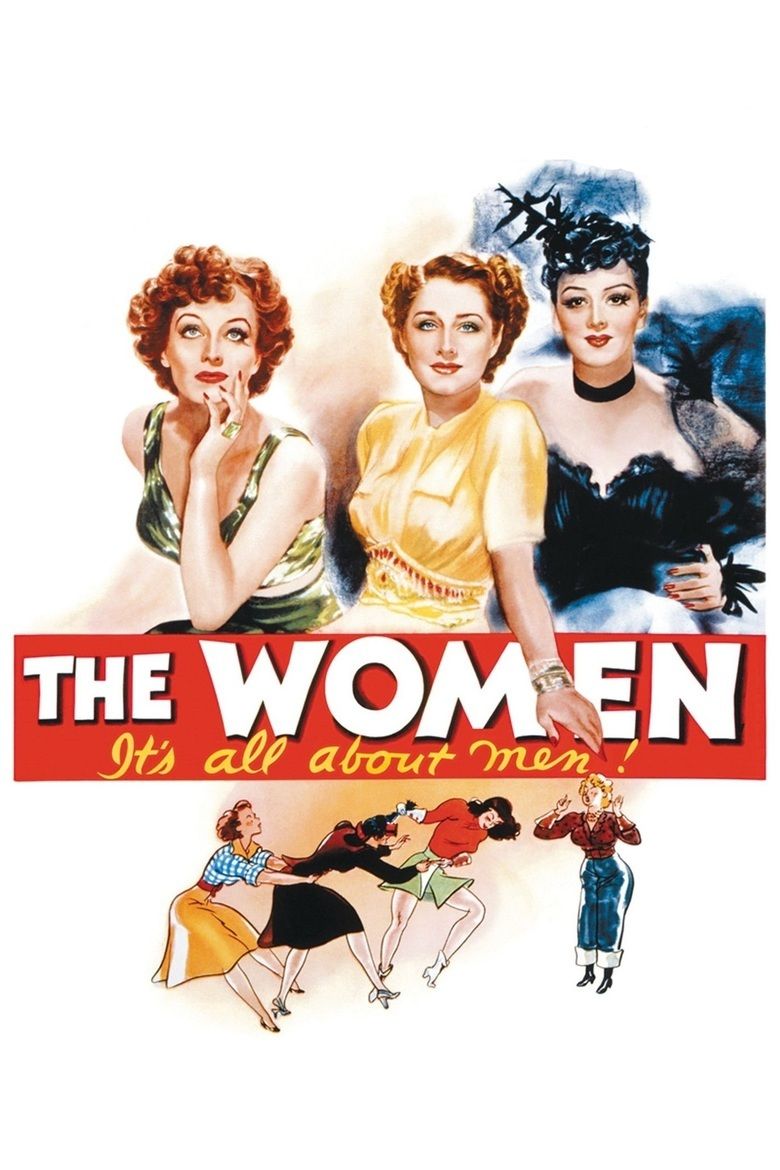 | ||||||||||||||||||||||||||||||||||
Release date September 1, 1939 (1939-09-01) (United States) Cast (Mrs. Stephen Haines (Mary)), (Crystal Allen), (Mrs. Howard Fowler (Sylvia)), (The Countess De Lave), (Miriam Aarons), (Mrs. Phelps Potter (Edith)) Similar movies Teenage Mutant Ninja Turtles , Birdman , Independence Day , A Walk Among the Tombstones , Sex Tape , Straight Outta Compton Tagline It's all about men! | ||||||||||||||||||||||||||||||||||
The women 1939 official trailer joan crawford norma shearer movie hd
The Women is a 1939 American comedy-drama film directed by George Cukor. The film is based on Clare Boothe Luce's play of the same name, and was adapted for the screen by Anita Loos and Jane Murfin, who had to make the film acceptable for the Production Code for it to be released.
Contents
- The women 1939 official trailer joan crawford norma shearer movie hd
- The women 1939
- Plot
- Production
- Technicolor sequence
- Reception
- Box office
- Cultural impact
- Parody
- Remakes
- References

The film stars Norma Shearer, Joan Crawford, Rosalind Russell, Paulette Goddard, Joan Fontaine, Lucile Watson, Mary Boland, Florence Nash, and Virginia Grey, as well as Marjorie Main and Phyllis Povah, the last two of whom reprised their stage roles from the play. Ruth Hussey, Virginia Weidler, Butterfly McQueen, and Hedda Hopper also appeared in smaller roles. Fontaine was the last surviving actress with a credited role in the film; she died in 2013.
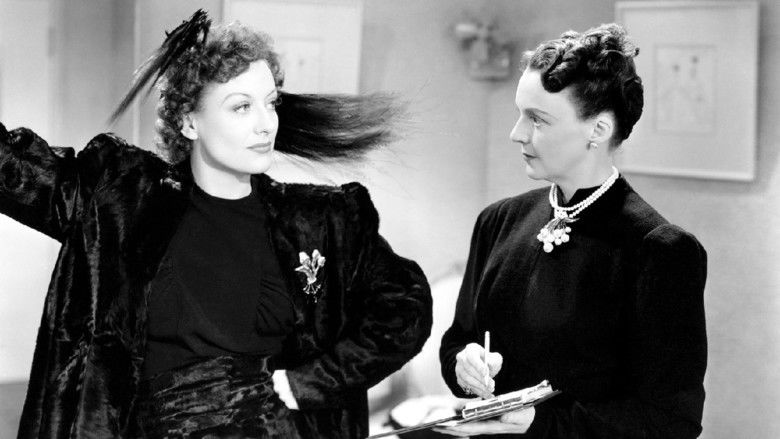
The film continued the play's all-female tradition—the entire cast of more than 130 speaking roles was female. Set in the glamorous Manhattan apartments of high society evoked by Cedric Gibbons, and in Reno, where they obtain their divorces, it presents an acidic commentary on the pampered lives and power struggles of various rich, bored wives and other women they come into contact with.
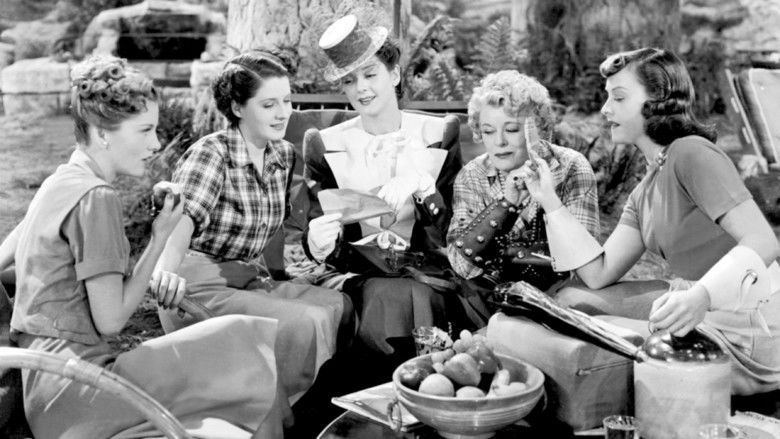
Throughout The Women, not a single male is seen — although the males are much talked about, and the central theme is the women's relationships with them. Lesbianism is intimated in the portrayal of only one character, Nancy Blake ("I am an old maid, a frozen asset."). The attention to detail was such that even in props such as portraits, only female figures are represented, and several animals which appeared as pets were also female. The only exceptions are a poster-drawing clearly of a bull in the fashion show segment and an ad on the back of the magazine Peggy reads at Mary's house before lunch.
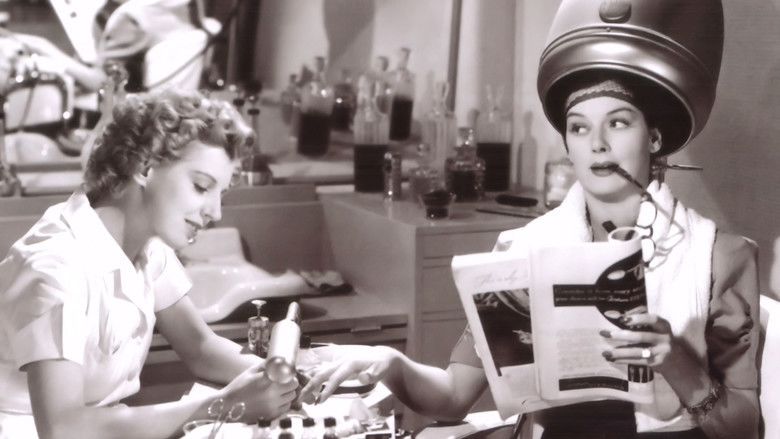
Filmed in black and white, it includes a 10-minute fashion parade filmed in Technicolor, featuring Adrian's most outré designs; often cut in modern screenings, it has been restored by Turner Classic Movies. On DVD, the original black and white fashion show, which is a different take, is available for the first time.
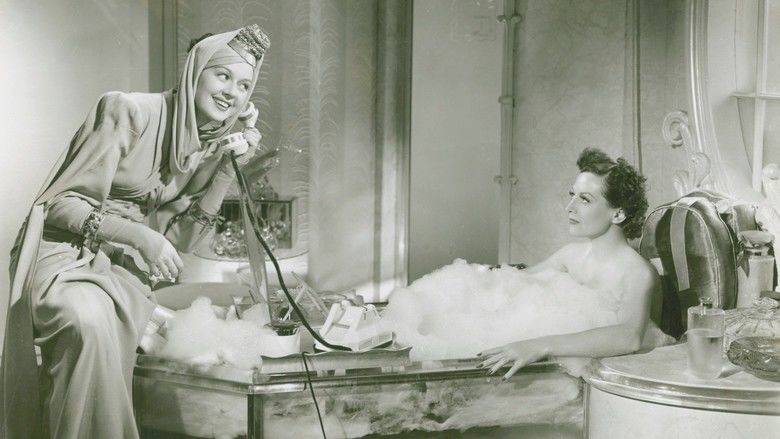
The women 1939
Plot
The Women follows the lives of Manhattan women, focusing in particular on Mary Haines (Norma Shearer), the cheerful, contented wife of Stephen and mother of Little Mary (Virginia Weidler). After a bit of gossip flies around the salon these wealthy women visit, Mary's cousin Sylvia Fowler (Rosalind Russell) goes to a salon to get the newest, exclusive nail color: Jungle Red. She learns from a manicurist that Mary's husband has been having an affair with a predatory perfume counter girl named Crystal Allen (Joan Crawford). A notorious gossip, Sylvia delights in sharing the news with Mary's friends; she sets up Mary with an appointment with the same manicurist so that she hears the rumor about Stephen's infidelity.
While Mary's mother (Lucile Watson) urges her to ignore the gossip, Mary begins to have her own suspicions about her husband's increasingly frequent claims that he needs to work late. She decides to travel to Bermuda with her mother to think about the situation and hope the rumors will fade. Upon her return, Mary heads to a fashion show and learns that Crystal is in attendance, trying on clothes in a dressing room. Mary, at Sylvia's insistence, confronts her about the affair, but Crystal is completely unapologetic and slyly suggests that Mary keep the status quo unless she wants to lose Stephen in a divorce. Heartbroken and humiliated, Mary leaves quickly. The gossip continues, exacerbated by Sylvia and her friend Edith (Phyllis Povah), who turns the affair into a public scandal by recounting Sylvia's version of the story to a notorious gossip columnist. Mary chooses to divorce her husband despite his efforts to convince her to stay. As she is packing to leave for Reno, Mary explains the divorce to Little Mary.
On the train to Reno, where she will get her divorce, Mary meets several women with the same destination and purpose: the dramatic, extravagant Countess de Lave (Mary Boland); Miriam Aarons (Paulette Goddard), a tough-cookie chorus girl; and, to her surprise, her friend Peggy Day (Joan Fontaine), a shy young woman. Mary and her new friends settle in at a Reno ranch, where they get plenty of unsolicited advice from Lucy (Marjorie Main), the gruffly warm-hearted woman who runs the ranch. The Countess tells tales of her multiple husbands and seems to have found another prospect in Reno, a cowboy named Buck Winston. Miriam reveals she has been having an affair with Sylvia Fowler's husband and plans to marry him. Peggy, who has discovered that she is pregnant, is urged to call her husband, resolve their misunderstanding, and end the divorce proceedings. She succeeds. Sylvia arrives at the ranch, now that her husband has requested a divorce ("Well, girls: move over"). When she discovers that Miriam is to become the new Mrs. Fowler, a catfight ensues. Mary succeeds in breaking up the fight. Miriam convinces her that she, too, should forget her pride, get her husband on the phone, and try to patch things up before their divorce becomes legal in a few hours. Before Mary can decide, it rings — the call is from Stephen, who informs Mary that Crystal and he have just been married.
Two years pass. At the Haines apartment, Crystal, now Mrs. Haines, is taking a bubble bath and talking on the phone to her lover, who turns out to be Buck Winston, now the husband of the Countess and a successful radio star. Little Mary overhears the conversation before being shooed away by Crystal, who, not surprisingly, has no time or patience for the child. Sylvia figures out with whom Crystal has been speaking and is having an affair. Still an unrelenting gossip, Sylvia tucks this information away for later use. Mary hosts a dinner for her Reno friends to celebrate the two-year anniversary of the Countess and Buck, after which the Countess, Miriam, and Peggy go to a nightclub and urge Mary to come along. Mary decides to stay home. She chats with Little Mary, who inadvertently reveals how unhappy Stephen is and mentions Crystal's "lovey dovey" talk with Buck on the telephone. This news changes Mary's mind about the party. She gets dressed up, intent on fighting to get her ex back: "I've had two years to grow claws, Mother -- Jungle Red!"
At the nightclub (in the ladies' room), Mary worms the details of the affair out of Sylvia, then makes sure that a gossip columnist (played by a real-life one, Hedda Hopper) is alerted to it. Mary tells the Countess that her husband Buck has been having an affair with Crystal, then informs Crystal that everyone knows what she has been doing. Crystal does not care and tells Mary she can have Stephen back, since she will now have Buck to support her. The Countess reveals that she has been funding Buck's radio career and that with Crystal, he will be penniless and out of a job. Crystal resigns herself to the fact that she will be heading back to the perfume counter, adding: "And by the way, there's a name for you ladies, but it isn't used in high society -- outside of a kennel."
Mary, triumphant, heads out the door and up the stairs to win back Stephen, who is waiting for her.
Production
In January 1937, producers Harry M. Goetz and Max Gordon bought the film rights to the play for $125,000 and planned on turning it into a Claudette Colbert vehicle, with Gregory LaCava as the director. In March 1938, Norma Shearer and Carole Lombard were in negotiations to star. In November 1938, it was announced Jane Murfin was busy writing the film's screenplay at MGM. Virginia Weidler was cast on April 24, 1939. F. Scott Fitzgerald worked on the script early on in the process, but was uncredited.
Technicolor sequence
The Women has one color sequence by Technicolor, a scene featuring a fashion show. When interviewed by TCM host Robert Osborne, director George Cukor stated that he did not like the sequence and that he wanted to remove it from the film.
Reception
The film was commercially successful and was cited as one of the best of the year. Although it received no Academy Award nominations, many critics now describe it as one of the major films of what was a stellar year in Hollywood film production. On review aggregate website Rotten Tomatoes, The Women holds a 90% 'Fresh' rating.
Box office
According to MGM records the film earned $1,610,000 in the US and Canada and $660,000 elsewhere but because of its high production cost ultimately incurred a loss of $262,000. However, the film was re-released in 1947 and earned a small profit of $52,000.
Cultural impact
In 2007, The Women was selected for preservation in the United States National Film Registry by the Library of Congress as being "culturally, historically, or aesthetically significant".
Parody
On his November 5, 1939 radio broadcast, Jack Benny presented a sketch parody of The Women with all the male cast members in female roles and Mary Livingstone as the announcer.
Remakes
It was remade as a 1956 musical comedy, The Opposite Sex, starring June Allyson, Joan Collins, and Ann Miller.
In 1977 it was remade by Rainer Werner Fassbinder for German television as Women in New York.
In 2008, Diane English wrote and directed a remake of the same title, her feature film directorial debut. The comedy starred Meg Ryan, Eva Mendes, Annette Bening, Jada Pinkett Smith, Bette Midler, and Debra Messing, and was released in 2008 by Picturehouse Entertainment, a sister company to Warner Bros. (the current owners of the 1939 version through Turner Entertainment).
References
The Women (1939 film) WikipediaThe Women (1939 film) IMDb The Women (1939 film) themoviedb.org
